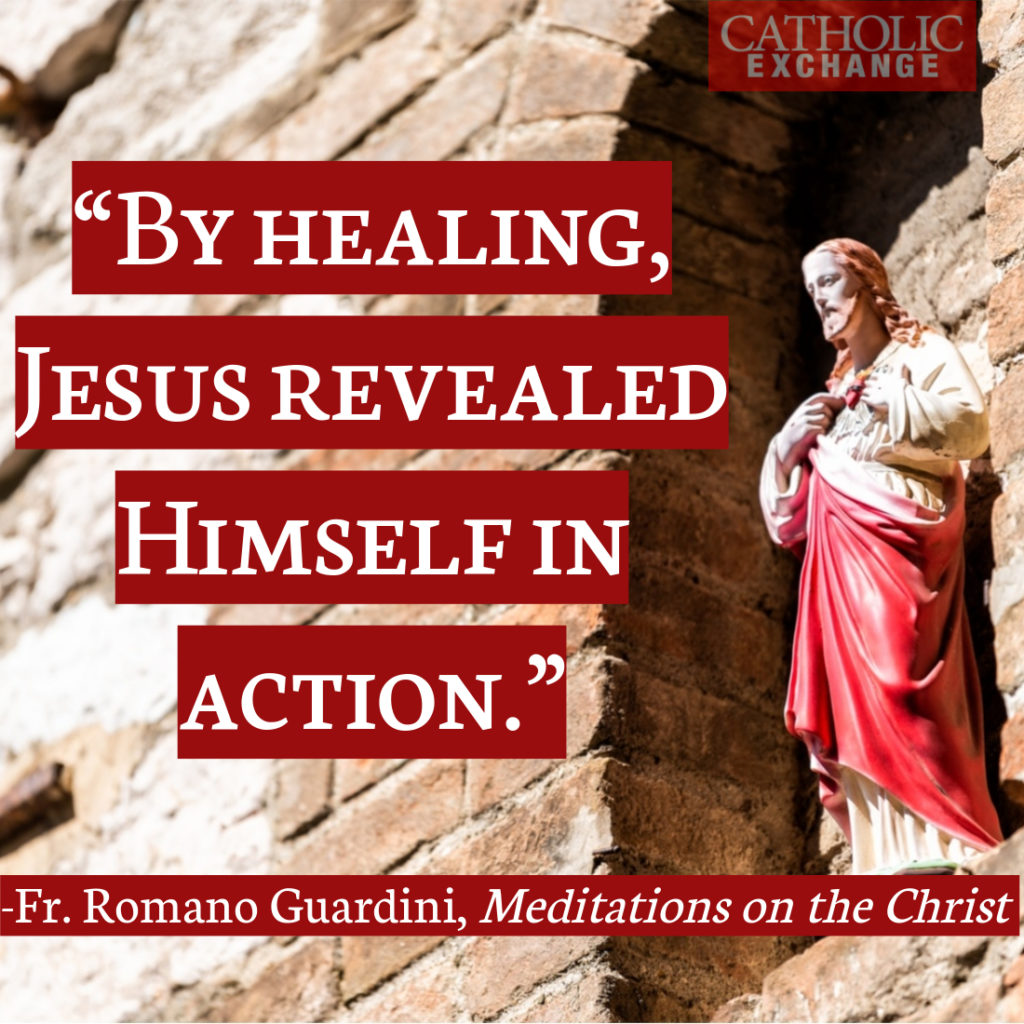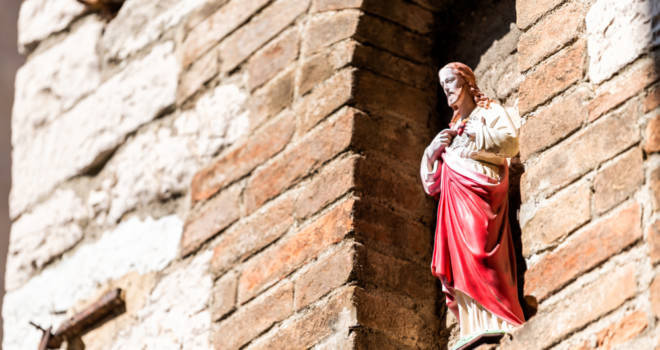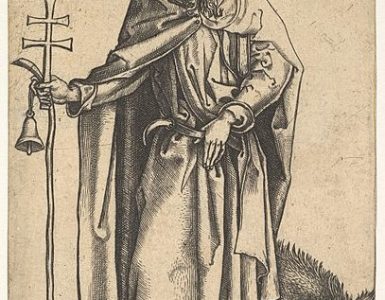Christ heals the sick. On the very first pages of the Gospels, He appears as the healer. He had hardly begun His teaching when the sick started coming. They were brought to Him from every quarter. It was as if the masses of the afflicted were always opening up around and closing in on Him. They came by themselves, they were led, they were carried, and He passed through the suffering multitude of people, and “a power from God was present, and healed.”
Right at the beginning, He came up to Peter’s house. Peter’s mother-in-law was ill with a bad fever. He approached the litter, and standing over her, He “rebuked the fever.” It left her, and straightaway she rose and attended to the visitors.
At
times, one is prompted to look behind the outward events at the inner working
of this sacred power.
A
blind man came to Him. Jesus put His hands on the man’s eyes, drew them away,
and asked, “What seest thou?” All overcome with excitement, the man answered,
“I can see men as if they were trees, but walking!” The healing power reached
into the nerves. They were revivified, but they did not yet work properly. So
He put His hands on the eyes once again, and the man saw things as they were.
Does not this story give one a sense of experiencing the mystery, as it were,
from behind the scenes?
Another time, there was a great crowd about Him. A woman afflicted many years with a hemorrhage, who had sought everywhere in vain for a cure and had spent all her money to find one, said to herself, “If I can even touch His cloak, I shall be healed.” And she came up to Him from behind, touched His garment, and noticed in her body that the distress which had been plaguing her for so long was at an end. But He turned around: “Who touched my garments?” The Apostles were dumbfounded: “Canst Thou see the multitude pressing so close about Thee, and yet ask, ‘Who touched me?’” But He knew just what He was saying; immediately He had been “inwardly aware of the power that had proceeded from Him.” And the woman came up to Him trembling, threw herself at His feet, and confessed what had happened. But He forgave her freely and lovingly.

What an effect that had all around! He
seemed charged with healing power, as if He needed no intention. If someone
approached Him in an open-hearted, petitioning state of mind, the power simply
proceeded from Him to do its work.
What did the act of healing mean to Christ? It has been
said that He was the great friend of mankind. Characteristic of our own time is
an extremely alert sense of social responsibility and responsiveness to works
of mercy. So there has been a corresponding desire to see in Him the towering
helper of men, who saw human suffering and, out of His great mercy, hastened to
relieve it.
But this is an error. Jesus is not a personification of the big-hearted charitable nature with a great social conscience and an elemental power of helping others, going after human suffering, feeling its pangs in sympathy, understanding it, and conquering it. The social worker and the relief worker are trying to diminish suffering, to dispose of it entirely, if possible. Such a person hopes to have happy, healthy people, well-balanced in body and soul, live on this earth. We have to see this to understand that Jesus had no such thing in mind. It does not run counter to His wishes, but He Himself was not concerned with this. He saw too deeply into suffering. For the meaning of suffering, along with sin and estrangement from God, was to be found at the very roots of being. In the last analysis, suffering for Him represented the open road, the access back to God — at least the instrument which can serve as access. Suffering is a consequence of guilt, it is true, but at the same time, it is the means of purification and return.
We
are much closer to the truth if we say Christ took the sufferings of mankind
upon Himself. He did not recoil from them, as man always does. He did not
overlook suffering. He did not protect Himself from it. He let it come to Him,
took it into His heart. As far as suffering went, He accepted people as they
were, in their true condition. He cast Himself in the midst of all the distress
of mankind, with its guilt, want, and wretchedness.
This is a tremendous thing, a love of the greatest seriousness, no enchantments or illusions — and therefore, a love of overwhelming power because it is a “deed of truth in love,” unbinding, shaking things to their roots.
Once again we must see the difference: He did this, not as one
carrying on his shoulders the black tragedy of the human condition, but rather
as one who was to comprehend it all, from God’s point of view. Therein lies the
characteristic distinction.
Christ’s
healing derives from God. It reveals God, and leads to God.
With Christ, healing always appears in some connection with faith. He could perform no miracles in Nazareth because there no one believed. His disciples were unable to cure the sick boy because their faith was on too small a scale. When the man crippled with arthritis was brought up to Him, at first Jesus seemed not to see the man’s affliction at all. He saw his faith, and bestowed forgiveness upon him. The blind man heard Him say, “Thy faith has brought thee recovery.” The centurion heard the hearty compliment: “Believe me, I have not found faith like this, even in Israel.”
Healing belongs to faith, even as the Annunciation belongs with faith. By healing, Jesus revealed Himself in action. Thus He gives concrete expression to the reality of the living God.
To make men penetrate to the reality of the living God — that is why Christ healed.
✠
This article is from a chapter in Fr. Guardini’s Meditations on the Christ, Model of All Holiness. It is available from your favorite bookstore or online at Sophia Institute Press.













